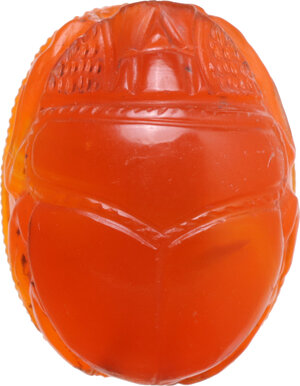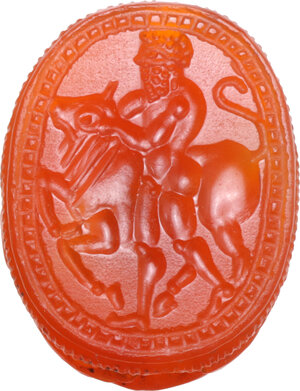

Lot 941:
ETRUSCAN CARNELIAN SCARABOID
Etruscan culture, 4th - 3rd century BC.
Important Etruscan scarab beetle in orange carnelian. The curved part is engraved in relief with anatomical details of the scarab, while the flat part depicts a scene from the Twelve Labors of Heracles (the Capturing of the Cretan Bull).
Dimensions: 18.5 x 14 mm. Rare and fascinating item, intact and complete.
Etruscan culture, 4th - 3rd century BC.
Important Etruscan scarab beetle in orange carnelian. The curved part is engraved in relief with anatomical details of the scarab, while the flat part depicts a scene from the Twelve Labors of Heracles (the Capturing of the Cretan Bull).
Dimensions: 18.5 x 14 mm. Rare and fascinating item, intact and complete.
With the sales document of the shop 'à la reine margot', Paris.
Ex George Zacos collection.
The seventh labour of Heracles, also categorised as the first of the non-Peloponneisan labours, was to capture the Cretan Bull, father of the Minotaur. According to Apollodorus, Heracles sailed to Crete, asked King Minos for help, but Minos told Heracles to capture the bull himself, which he did. After showing the bull to Eurystheus, Heracles released the bull which ended up at Marathon. Ex George Zacos collection.
